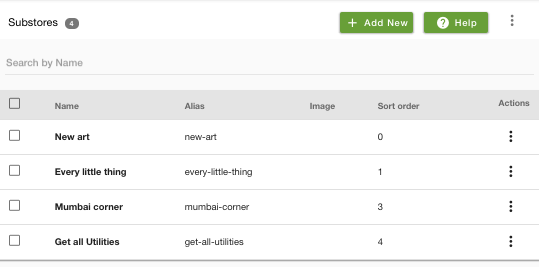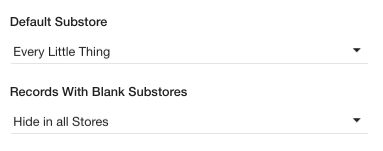Helpcenter
+918010117117
https://help.storehippo.com/s/573db3149f0d58741f0cc63b/ms.settings/5256837ccc4abf1d39000001/57614ef64256dc6851749879-480x480.png"
[email protected]
https://www.facebook.com/StoreHippohttps://twitter.com/StoreHippohttps://www.linkedin.com/company/hippoinnovations/https://plus.google.com/+Storehippo/posts
B4,309-10 Spaze iTech Park, Sector 49, Sohna Road,
122001
Gurgaon
India
Create a Trial Store
StoreHippo.com
Contact Us
-
Email:
[email protected]
Phone:
+918010117117
StoreHippo Help Center
StoreHippo Help Center
call to replace anchor tags contains '/admin' in href
Example
2018-04-04T05:55:57.027Z
2019-06-07T08:10:25.298Z
- Home
- Substores (Multi-store)
- How to create multiple stores within a store?
How to create multiple stores within a store?
Mr.Rajiv kumarScenario
Suppose, you want to create individual stores for your sellers. On these individual stores, your customers would be able to view and buy the products sold by a particular seller. They can do so by first selecting the "Store" of the given seller and then choose from the products that are sold there.
Example

Steps
StoreHippo multi-store ecommerce platform allows you to set up multiple substores within a store. Doing so you can offer a different storefront as well as products, layout, and payment options, etc. to your users.
Follow these steps to create substores in your stores:
Enabling MultiStore
- Go to Settings > Misc section in StoreHippo Admin Panel.
- Select the Enable Multistore checkbox to enable the multistore e-commerce functionality.

- Go to Settings > Substores in the StoreHippo Admin Panel to create substores.
- Click on Add New.

- Provide the Name of the substore as 'Every little thing'.

- You can provide the image, sort order and other settings of the substore if you want. Click on the Save button and the substore will be created.

- You can create various substores by following the same procedure.

Setting up default substores
- You might also want to select the default substore for your store. When the customer lands on your store, the default store will be the first store that is displayed. To do this, go to Settings > MISC section in the StoreHippo Admin Panel.
- Select the default substore from the drop down.

- Now, you need to define if you want to show or hide the substores when no substore is assigned to the records. Select hide or show in the Records With Blank Substore field.
- Click on Save to save the settings.
Linking products to substores
- Now, you need to link your products to the substores to show them in the substores.
- Go to Products > Products section in the StoreHippo Admin Panel to specify substore in a product.
- Edit an existing product and provide the name of the substore/substores to which you want to assign the product in the Substore field.

- You can do the same for categories, brands, collections, banners, and sliders.
- You can now view the substores on your website as shown below.

Table of Contents
Scenario
Example
Steps
Enabling MultiStore
Setting up default substores
Linking products to substores
Subtopics
Related Topics





